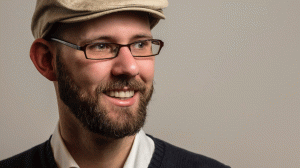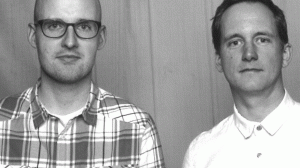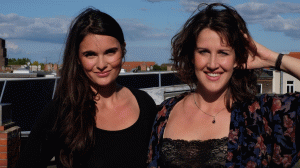Header: Beasty Design via Unsplash.
"to belonging" is a long-term project driven by tbd* that aims to change the discourse around diversity and inclusion to one of belonging. Anti-racism, feminism and equity will be the focus of our work and should lead to a radical systemic change in the impact sector, from "power over" and "power for" to "power with". This content series is a part of this project and is made possible by the Open Society Foundations.
The Open Society Foundations are the world’s largest private funder of independent groups working for justice, democratic governance, and human rights. Founded in 1984 by George Soros, the Foundations have grown into a global network working on issues from minority rights to access to health care and women’s rights. Throughout its history, Open Society has responded rapidly with innovative programs to address social, political, and economic change.
Sarah is a fundamental part of the Diversity, Equity and Inclusion Team at the Open Society Foundations and leads on disability inclusion as well as being a trainer/educator for staff around the world – including for their offices in Berlin. She shares with us some of her best practices, learnings, and advice for those embarking on a journey of unlearning within their own organizations.
What made you interested in working on disability, equity, and inclusion issues?
I am not from the world of HR or philanthropy, but rather education. I started in social justice education and intercultural relations and moved gradually into disability- related advocacy particularly trying to raise awareness on invisible disabilities and around disability identity as part of the diversity spectrum. I moved to the UK and did a master’s in applied human rights. Actually, I ended up working there for a while so didn’t fully break out of education until starting here in 2019. I really hit the ground running and have been able to integrate all my experience as a trainer and educator.
[recommended:14228]
What has been your role at the Open Society Foundations?
When I started, it was all about disability rights and that was mainly focused around the disabilities accommodation policy. But that’s just a legal document. Policies are important but sometimes miss the bigger picture. I felt that what was really missing was the hearts and minds work; communicating the policy and making inroads to make sure that everybody understands that disability inclusion is vital. We have a really long way to go. Nonprofits are filled with idealistic people who think they have done all the work. We are doing a lot of hands-on work to help people to understand the disability identity: that you do not “have a disability” but are rather disabled by your environment. I myself have a chronic illness so I am able to speak from my own experience.
Sarah Napoli © The Open Society Foundations
How do you approach diversity, equity, and inclusion with your colleagues?
When I start a session on diversity, equity, and inclusion, I always ask: who is multicultural? At first only the people of color raise their hands. So I stand there and wait. Eventually everybody raises their hands. People think diversity means diversity of color but that’s dated and problematic. If I have to define the terms, I would say this: diversity is about who is in the mix, inclusion is making the mix work, and equity is layering it with conversations about power and privilege.
That means asking questions like: What does it have to do with the social constructs that disenfranchise people from the start? One thing we have been looking at over the past few weeks is whether a one-size-fits-all policy for covid-19 deals with the situation in equitable ways. Since the situation affects different people in different ways, the policy needs to reflect that. That’s the difference between equal and equitable.
If I were starting out with a DEI plan for my organization it would define disability, look at legal definitions, the language, the concepts. It would certainly inititally provide a basic cushion of support; and meet bare minimum standards of what is legally required. I would then start to use a lot of storytelling. I often share my own story and I give space for people to ask the uncomfortable questions by asking, “What are the things you have always wanted to know but have been afraid to ask.” I try to have as many conversations as possible about what an inclusive culture could look like, and find and share best practices.
Finally, for me it is important to focus on intersectionality. How does being a person of color intersect with disability, gender, differences within the experience? There is not one universal experience of disability.
When there is storytelling, involved do you worry about tokenism?
Even though we focus on storytelling and invite people to tell their stories, we make sure that it is their choice to put themselves out there. And we also let people know if they are asking the wrong questions. One time, when I told my own story, one of my colleagues kept expressing that they felt sorry for me... I got a little annoyed. I don’t want pity. If I am telling my story, I want you to be in that space with me. To be angry with me. And if I say to you, “I don’t want you to feel sorry for me,” I want you to accept that.
There is a wonderful TED talk by the disability activist Stella Young, who says, “I am not your inspiration”, which I can highly recommend.
What kind of responses and outcomes have you already seen from your work?
People have been blown away by our training sessions. We help expose invisible power structures and their own privileges and do a lot of identity work. We talk about Critical Race Theory, the Cultural Iceberg, the Cycle of Socialization, and the Theater of the Oppressed. We use all of this to look at the different identities in the room and to explore our own identity. We also look at the Ladder of Inference to examine how we construct bias. We cover a lot of theory but then we also go into action.
To be honest, even in organizations where people have great intentions, the disability issue is not seen as vital. We have to do some work just to get people to pay attention. I have a good story about a colleague who works in IT. As part of our Disability Adjustment Policy, the IT department had a task to implement assistive software, so I worked with a member of the IT team to get the task accomplished. He was new to the concept of disability inclusion and may have had doubts about the necessity. A short time later, we both went to an assistive technology conference in Orlando. After we arrived, my colleague and I walked through the showroom and discovered 2,000 techies who were very passionate about assistive technology. This opened his eyes to a new world. Now he is one of our champions for disability inclusion.
I find it helps if you can reframe the question: “Think about the work you do and think about how it might be disabling people.”
Ask the right question and it really brings it home to someone how they have unwittingly been excluding many people.










